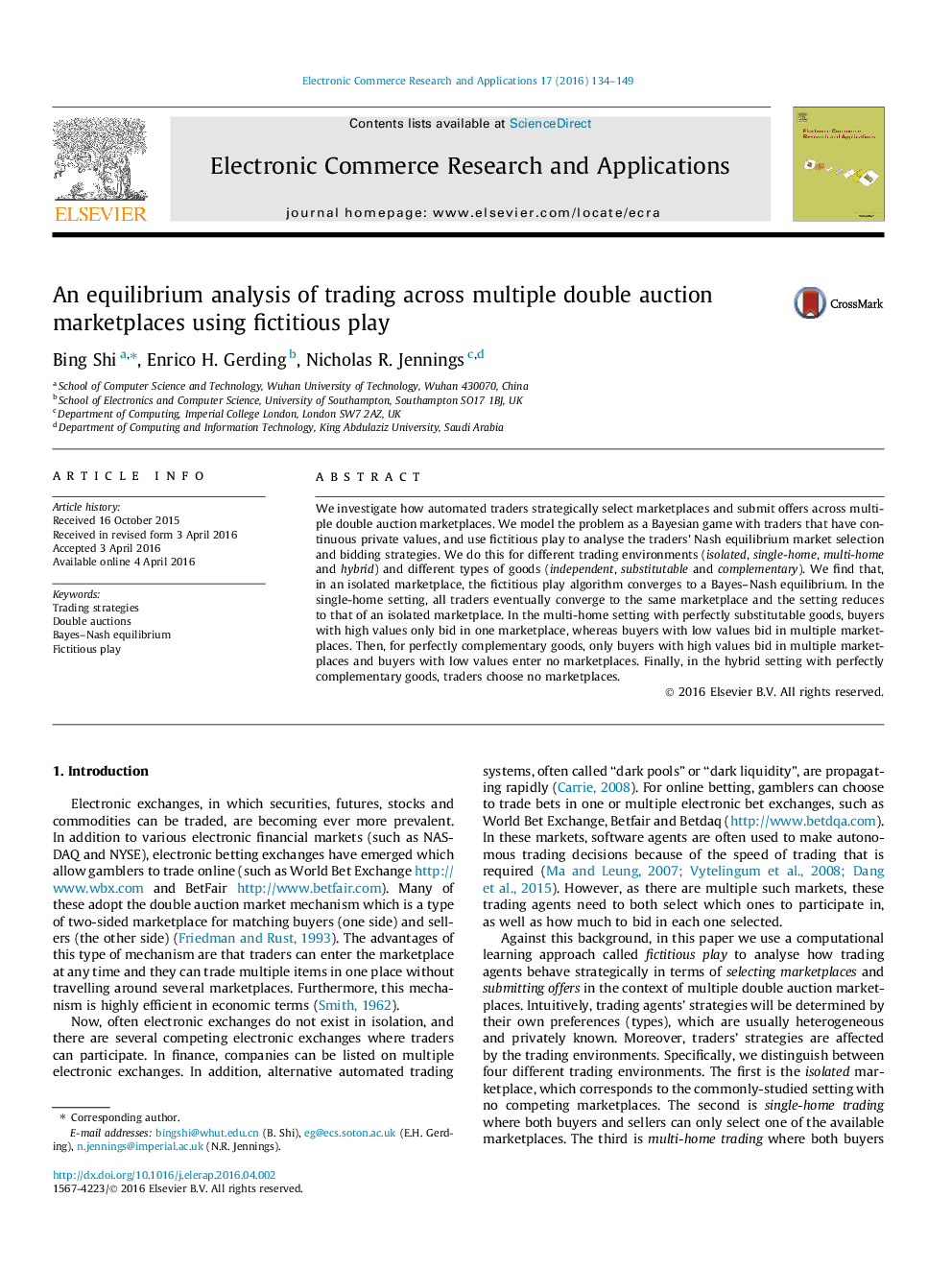| Article ID | Journal | Published Year | Pages | File Type |
|---|---|---|---|---|
| 379555 | Electronic Commerce Research and Applications | 2016 | 16 Pages |
•We investigate traders’ market selection and bidding strategies in multiple double auctions.•We model the setting as a Bayesian game with continuous private values.•We consider different trading environments with independent, substitutable and complementary goods.•We use a modified fictitious play algorithm to compute Bayes–Nash equilibrium trading strategies.•We draw various insights such as that traders may not participate when trading perfectly complementary goods.
We investigate how automated traders strategically select marketplaces and submit offers across multiple double auction marketplaces. We model the problem as a Bayesian game with traders that have continuous private values, and use fictitious play to analyse the traders’ Nash equilibrium market selection and bidding strategies. We do this for different trading environments (isolated, single-home, multi-home and hybrid) and different types of goods (independent, substitutable and complementary). We find that, in an isolated marketplace, the fictitious play algorithm converges to a Bayes–Nash equilibrium. In the single-home setting, all traders eventually converge to the same marketplace and the setting reduces to that of an isolated marketplace. In the multi-home setting with perfectly substitutable goods, buyers with high values only bid in one marketplace, whereas buyers with low values bid in multiple marketplaces. Then, for perfectly complementary goods, only buyers with high values bid in multiple marketplaces and buyers with low values enter no marketplaces. Finally, in the hybrid setting with perfectly complementary goods, traders choose no marketplaces.
